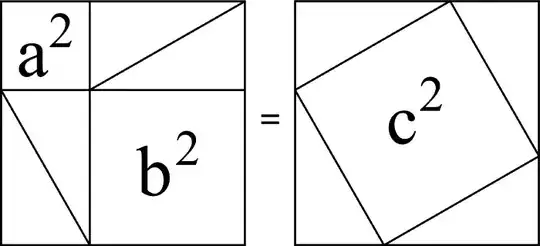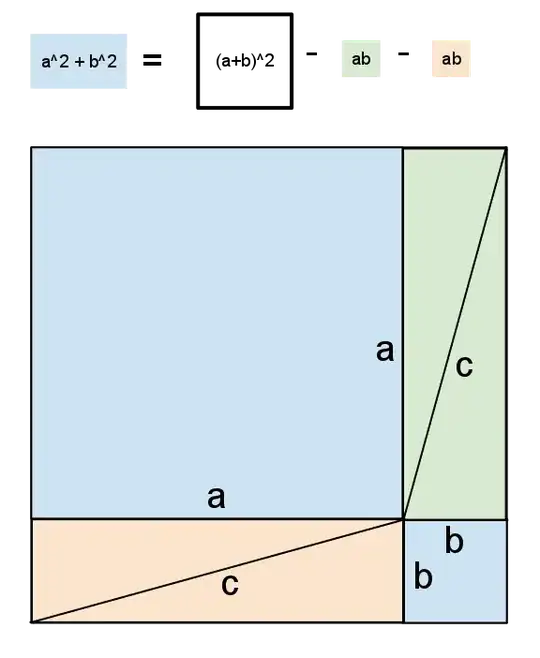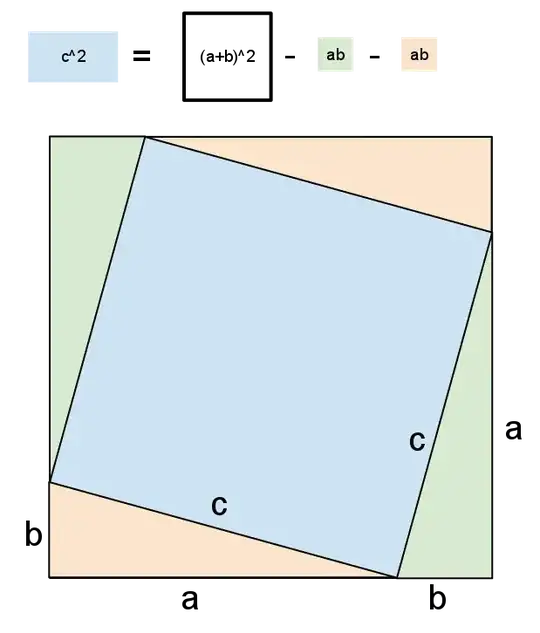I was intrigued by a book I saw called Proofs without Words. So I bought it, and discovered that the entire book doesn't have any words in it. I figured at least it would have some words explaining the pictures or something to help understand the proofs. I was wrong.
The book gives several picture proofs of the Pythagorean theorem. Attached is the first one. Can someone add a few words (or even just arrows and labels or anything) which would help me understand how this pic proves the theorem (which says, as I know all of you know, that $a^2+b^2=c^2$, where $a$ and $b$ are the lengths of the perpendicular sides of a right triangle, and $c$ is the length of the hypotenuse).
$\qquad\quad$ 



